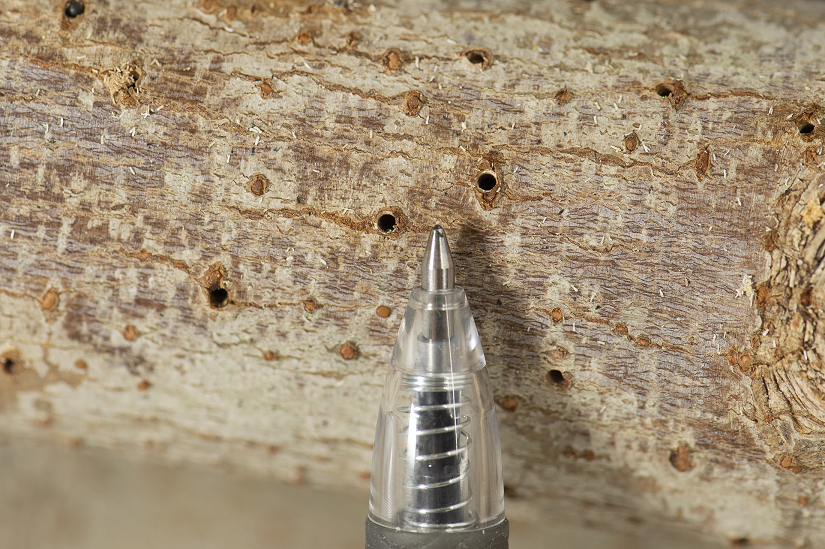
The Department of Primary Industries and Regional Development is responding to the suspect detection of an exotic beetle Polyphagous Shot-Hole Borer (PSHB) in a backyard maple tree in East Fremantle.
The department has asked residents to check trees and report any signs of borer damage and wilting. The department is also undertaking surveillance in the East Fremantle and Fremantle areas to determine the spread of the borer.
It is also important that local residents do not remove wood or green waste material from their properties unless it is through an approved council collection to help contain any potential spread of PSHB.
East Fremantle residents placing out green waste for an approved collection are asked to inspect it for borer damage, and if they see any of the symptoms, to keep the material on their property and make a report to the department via the MyPestGuide® Reporter app.
PSHB does not affect grass so lawn clippings can be disposed of as normal.
The tiny borer is exotic to Australia and considered both an agricultural and environmental pest due to its wide range of host species including avocado and citrus, native and amenity trees.
Department chief plant biosecurity officer Sonya Broughton said the borer was detected thanks to the vigilance of a local resident who reported signs of dieback and dead branches in their maple tree through the department’s MyPestGuide® Reporter app.
“I encourage the Fremantle community to continue reporting to the department any unusual symptoms in their trees as soon as they spot them,” Dr Broughton said.
“If established, the borer would have a significant impact on a number of industries including avocado, citrus, forestry, nursery and gardening.
“The borer can spread by flying up to 400m to neighbouring trees or by the movement of infested firewood and green waste material, which is why it is important that local residents do not remove any wood or green waste from their properties, unless it is through an approved council collection, as we continue our tracing and surveillance.”
Dr Broughton said the borer and their larvae would be hard to spot as they spent most of their lives inside a tree, however there were a number of symptoms to look out for that indicates the borer could be present.
“These include multiple entrance holes on the trunk or branches that are approximately the size of a ballpoint pen tip, frass extruding from the tree and crystalline foam (sugar volcanoes) exuded from the entry holes,” she said.
“Other signs to look out for are thick resin or sap on the tree branches or trunk, dark brown to black staining of the wood around entrance holes and dying branches and tree death.”
Residents are asked to report anything usual to the department via the MyPestGuide® Reporter app or to the Pest and Disease Information Service on +61 (0)8 9368 3080, email padis@dpird.wa.gov.au
For more information on PSHB visit the department’s website agric.wa.gov.au/borer
Caption: Residents are being asked to check their backyard trees for signs of borer damage including multiple entrance holes approximately the size of ballpoint pen tip, in response to a suspect detection of exotic beetle Polyphagous Shot-Hole Borer. (©2021 DPIRD)


